Results
-
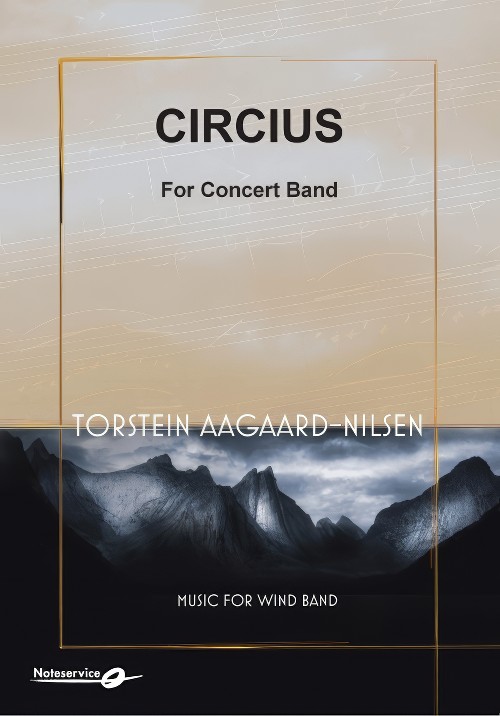 £145.00
£145.00Circius (Concert Band - Score and Parts) - Aagaard-Nilsen, Torstein
The title refers to a description of the wind of the north made by Olaus Magnus who lived in the 16th century. He drew maps describing people, animals, weather, winds, sea monsters etc. The map Carta Marina was unprecise, but the best they had. But he never visited the places himself. In the map over northern parts of Norway, he describes the wind "Circius" as the worst of all winds. The fast sections refers to the wind. In the middle section I borrow a folksong-like tune by Catharinus Elling (1858-1942). The text by Kristoffer Janson, tells about fishermen in small open boats. When they faced the force of nature they could do nothing but put their lives in the hand of God. - Torstein Aagaard-Nilsen
Estimated dispatch 7-14 working days
-
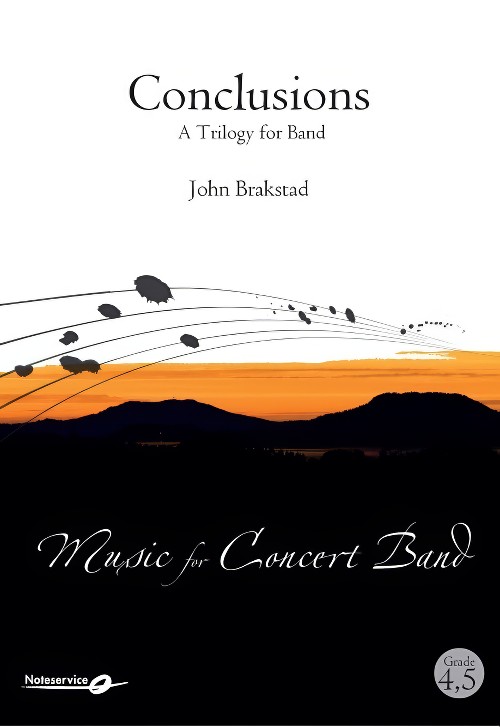 £140.00
£140.00Conclusions, A Trilogy for Band (Concert Band - Score and Parts) - Brakstad, John
Conclusions is inspired by three of the worlds greatest astronomers; their lifes, work and pioneering conclusions. 1: Copernicus. Nicolaus Copernicus lived in the 15th century. He introduced the idea that the planets rotate around the Sun rather than the Earth. This was a new and controversial world view which was not accepted in his lifetime. 2: Galileo. Galileo Galilei lived about a hundred years later and is sometimes called "the father of modern science". He is credited with the discovery of Jupiter's four largest moons. His discoveries supported Copernicus' model of the Solar System, and also showed that objects rotate around other planets than the Earth. Galilei was charged with heresy, and had to recant his claim that the Earth revolved around the Sun. "And yet it does move", he is supposed to have said. 3: Newton. Isaac Newton is known for his theory about the law of gravity and how it affects motion. This theory enabled him to accurately calculate the paths of the planets in the Solar System, and was a third conclusion in the astronomical tradition. In the same way that the three astronomers' independent conclusions build on ideas that are common to all three, Conclusions is built up of three independent movements which all include references to each other (melodic, harmonic, inversions etc.) Duration: 11.00
Estimated dispatch 7-14 working days
-
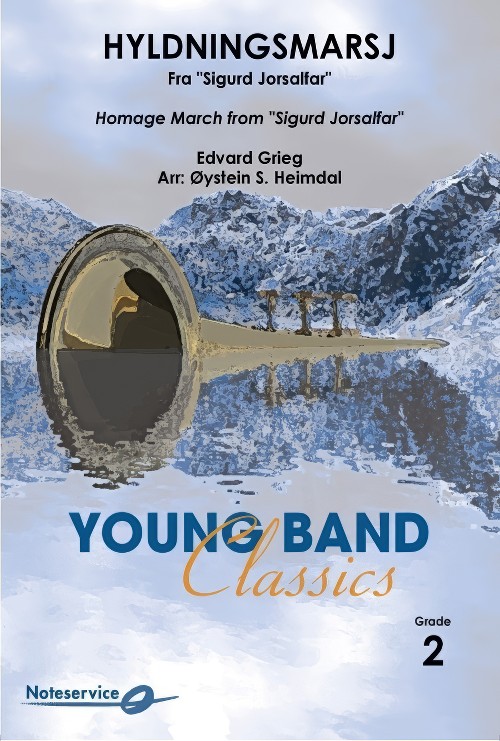 £71.00
£71.00Hyldningsmarsj fra Sigurd Jorsalfar (Homage March from Sigurd Jorsalfar) (Concert Band - Score and Parts) - Grieg, Edvard - Heimdal, Oystein S.
Edvard Hagerup Grieg (1843-1907) is the most important, national-romantic composer from Norway. He is also the most famous Norwegian composer abroad. He composed the stage music for "Sigurd Jorsalfar" in 1872. He edited three of the movements from "Sigurd Jorsalfar" in 1892 and published the as "Sigurd Jorsalfar Suite" in 1892. This arrangement of the famous Homage March-movement feature the opening theme and the closing sequence a bit simplified. A very fine piece to focus on sound development, phrasing, balance and dynamics. Duration: 3.15
Estimated dispatch 7-14 working days
-
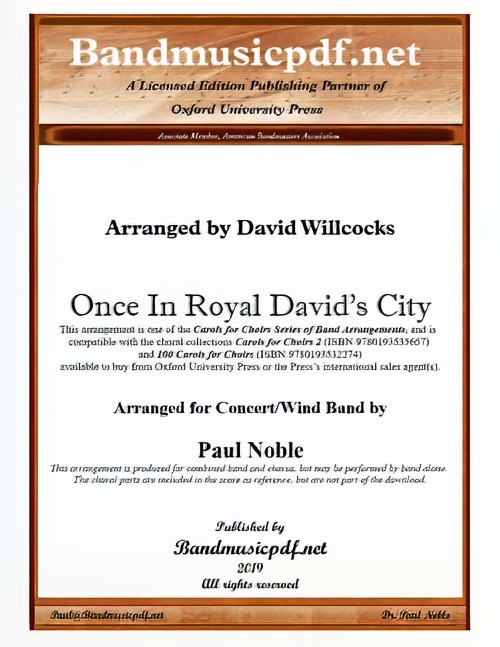 £75.00
£75.00Once in Royal David's City (Concert Band with Optional Choir - Score and Parts) - Noble & Willcocks
Once in Royal David's City is a Christmas carol originally written as a poem by Cecil Frances Alexander. The carol was first published in 1848 in her hymnbook Hymns for Little Children. A year later, the English organist Henry John Gauntlett discovered the poem and set it to music. According to The New Oxford Book of Carols, the text was conceived by Cecil Alexander after overhearing a group of her god children complaining about the dreariness of the catechism. Cecil masterfully took doctrines from the Apostle's Creed and simplified them for her hymns. Cecil wrote about 400 hymns in her lifetime, among which are All things bright and beautiful and There Is a Green Hill Far Away. She used the money for charitable purposes, and was a tireless advocate (and visitor) of the poor and sick. Henry John Gauntlett had spent the first half of his career as a lawyer before abandoning his practice to pursue music. He served as the organist at a number of leading London churches. Gauntlett was a prolific writer and is said to have composed over 1000 hymn tunes. He made tremendous contributions to the world of music, even inventing mechanical improvements to the organ. As a result, he was praised by the famous Felix Mendelssohn and was awarded an honorary doctorate in music from the Archbishop of Canterbury. In 1919, Arthur Henry Mann, organist at King's College (1876-1929), introduced an arrangement of Once in Royal David's City as the processional hymn for the service. In his version, the first stanza is sung unaccompanied by a boy chorister. The choir and then the congregation join in with the organ on succeeding stanzas. This has been the tradition ever since. It is a great honor to be the boy chosen to sing the opening solo--a voice heard literally around the world. In this arrangement for band accompaniment, the first five verses may be performed as directed by the conductor, with different groupings of instruments for each verse, i.e., Vs.1, A cappella; Vs. 2, Fl., Oboe, E.H., Bsns; Vs. 3 Cl., Saxes; Vs. 4, Brass; Vs. 5, All, and Vs. 6 as written with featured descant. This arrangement is one of the Series of Band Arrangements compatible with the David Willcocks Carols for Choir, Book 2 (#31).
Estimated dispatch 7-14 working days
-
 £125.00
£125.00KirkFeld (Trombone Solo with Concert Band - Score and Parts) - Kirkhope, Grant - McKenzie, Jock
Written for Ian Bousfield and the International Trombone Festival 2017. Grant Kirkhope is a BAFTA nominated British composer who has created the soundtrack for video games that have sold in excess of 30 million copies. From "GoldenEye" to "Banjo-Kazooie", "Viva Pi?ata" to "Donkey Kong", "Kingdoms of Amalur: Reckoning" to "Civilization: Beyond Earth" and "Perfect Dark" to "Castle of Illusion starring Mickey Mouse". He has also recently scored the feature film "The King's Daughter" starring Pierce Brosnan and William Hurt and is currently working on "Yooka Laylee" and "Dropzone". Grant's score for "Viva Pi?ata" was nominated by BAFTA in the Original Score category in its 2007 awards. Grant is represented by the prestigious Gorfaine/Schwartz Agency by Cheryl Tiano and Kevin Korn. Grant has a degree in music from the Royal Northern College of Music, Manchester, where he majored in classical trumpet, is a green card holder and now lives in Agoura Hills, LA with his wife and two children. "Ian and I first met when we were around 15 years old. We both played in our county orchestra, the North Yorkshire Schools Symphony Orchestra (I was a trumpet player). I think we hit it off straight away, as we were definitely a couple of cheeky kids, if you know what I mean! We both ended up playing in Rowntree Mackintosh Brass Band for a while too which Ian's Dad, Trevor conducted. We bumped into each other again when we both went for the Shell/LSO Scholarship. I got to the area finals in Manchester so I was pretty pleased with myself but then I saw Ian and I knew it was all over! Of course Ian went on to win and the rest is history. I saw him again when I was attending the Royal Northern College of Music around 1983 by which time Ian had just got the principal chair at the Halle Orchestra. Then I guess 30 something years went by as we both went about our lives and lost touch. We re-kindled our friendship due to his wife really. She emailed me to say it was Ian's 50th birthday and she was collecting stories from all his friends over the years. After that we got back in touch and then one day on Facebook I got a message from him in typical dry Yorkshire fashion "now then Grant, I had a listen to your music and I think it's good, how about writing a piece for me ?" I was a little bit unsure at first but of course I loved Ian's playing and of course I said yes. Over a Skype call in 2016, he asked me what I thought I'd write. I said since I live in LA I'd like to write a "Hollywood" trombone piece. Imagine if John Williams had written a piece for solo trombone, that's what I'd like to write - well I'd certainly like to try" - Grant Kirkhope
Estimated dispatch 7-14 working days
-
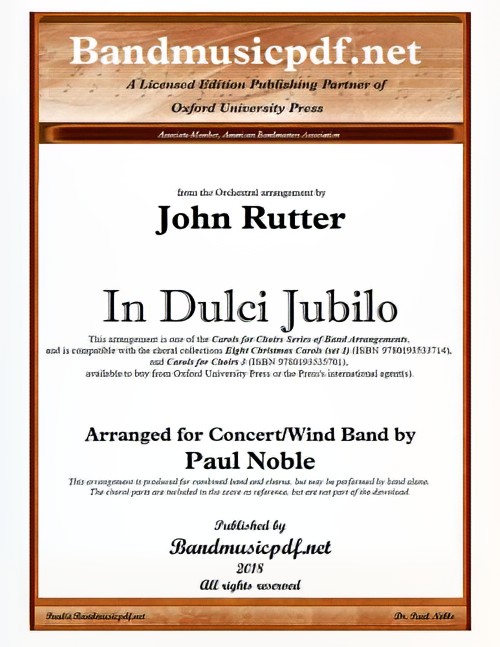 £75.00
£75.00In Dulci Jubilo (Concert Band with Optional Choir - Score and Parts) - Noble & Rutter
One night in 1328, the German mystic and Dominican monk Henrich Suso (or Seuse) had a vision in which he joined angels dancing as the angels sang to him Nun singet und seid froh or In Dulci Jubilo. In Suso's biography (or perhaps autobiography), it was written: Now this same angel came up to the Servant [Suso] brightly, and said that God had sent him down to him, to bring him heavenly joys amid his sufferings; adding that he must cast off all his sorrows from his mind and bear them company, and that he must also dance with them in heavenly fashion. Then they drew the Servant by the hand into the dance, and the youth began a joyous song about the infant Jesus, which runs thus: 'In dulci jubilo', etc. In Dulci Jubilo is among the oldest and most famous of the macaronic songs, one which combines Latin and a vernacular language such as English or German. Five hundred years later, this carol became the inspiration for the 1853 English paraphrase by John Mason Neale, Good Christian Men, Rejoice. Perhaps the earliest English version appeared c.1540. That popularity has endured for nearly 700 years. It's the rare contemporary collection of Christmas carols that doesn't contain a carol based on this ancient jewel.
Estimated dispatch 7-14 working days
-
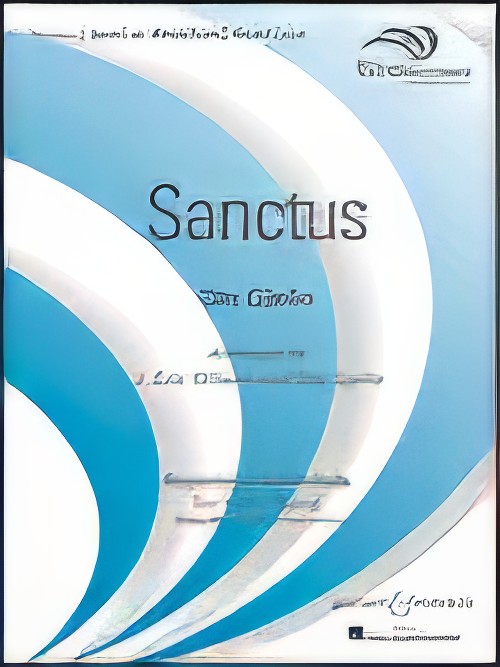 £85.00
£85.00Sanctus (Concert Band - Score and Parts) - Gjeilo, Ola - Wilson, J. Eric
Ola Gjeilo, born in 1978 in Norway, moved to the United States when he was 23 years old to study composition at the Julliard School. He composed this dense and richly textured setting of the Sanctus for the Uranienborg Vokalensemble shortly after he graduated in 2006. Eric Wilson has skilfully captured the magic of the original choral work in this transcription for winds. Ola Gjeilo stated the following regarding Sanctus: It's one piece of mine that remains closest to my heart.Duration: 4:20
Estimated dispatch 7-14 working days
-
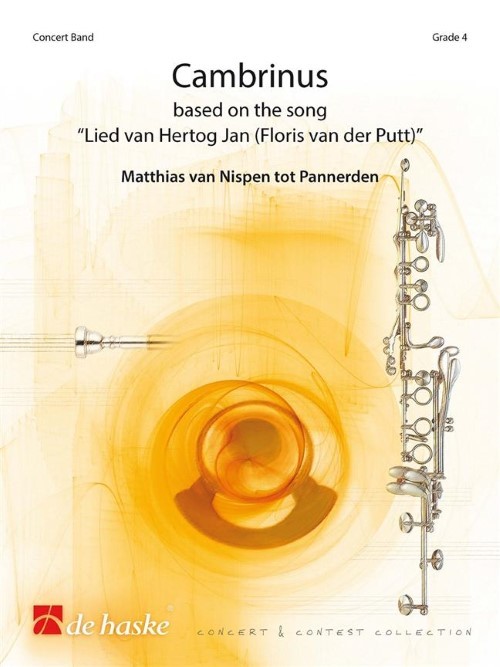 £134.99
£134.99Cambrinus (Concert Band - Score and Parts) - Pannerden, Matthias Van Nispen tot
The name Cambrinus, a corrupted variation on 'Jan Primus' (John the First), refers to the flamboyant John I of Brabant, who was the Duke of the Dutch provinces Brabant and Limburg, in the second half of the 13th century. This piece of music tells the story of this notable man, starting with the Battle of Worringen in 1288, where he scored a glorious victory, followed by an exuberant celebration in which he also contemplates about the suffering he and his men have caused. The works offers exciting energetic musical scenes with lots of action, as well as beautiful romantic and heroic themes offering plenty of opportunities for your band to unfold all its qualities. Duration: 7.15
Estimated dispatch 7-14 working days
-
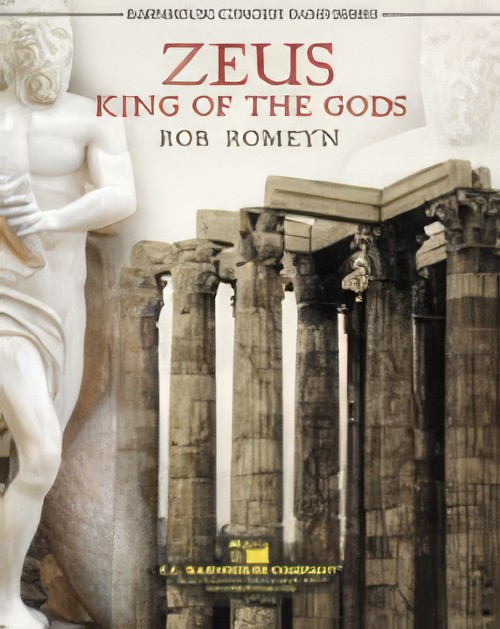 £86.00
£86.00Zeus: King of the Gods - Romeyn, Rob
This monumental programmatic work from the pen of Rob Romeyn captures the myth and legend of Zeus, the mythical master of the gods and men. A sky god, he controls lightning, which he uses as a weapon, and thunder. It opens as Zeus becomes involved in the Trojan war, hurling lightning bolts at his opponents. The tension soon subsides as we are introduced to the eternally beautiful Hera, whom Zeus would eventually marry. The music then ensues as our story unfolds, as Zeus made his domain the mountaintops and clouds where he could survey all creation, and inflict pain and justice on all evildoers. Tension builds as Zeus battles Typhon in hand to hand combat, ending ultimately with Zeus throwing the enormous Mt. Etna at the monster, pinning him underneath. From here, the tension subsides, and a beautiful lyrical section builds to an ending of incredible power and grandeur as Zeus again reaffirms his stature as the ruler of Mt. Olympus. This exceptional work is a wonderful addition to any concert or festival performance!Duration: 8.15
Estimated dispatch 7-14 working days
-
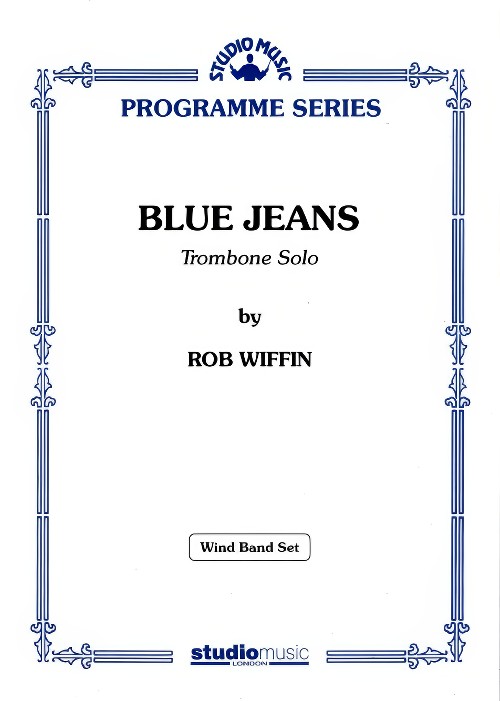 £59.95
£59.95Blue Jeans (Trombone Solo with Concert Band - Score and Parts) - Wiffin, Rob
In 2008 the trombonist, Chris Jeans, was invited to be a featured soloist at a British Trombone Society event. He contacted Stan Kitchen at Studio Music Company to see if he had any new material for trombone. Stan then got in touch with me, as I had already written a piece for another trombone player, Brett Baker. This piece, 'Shout' was programmed for the same event so we needed to find something new for Chris.The title 'Blue Jeans' came to my mind, thus linking a blues-style piece with the obvious reference to Chris's surname. I spoke to Chris and he liked the sound of it so then I had to go away and write a solo to match the title!I managed to get a version with piano accompaniment done in time for Chris to perform at the trombone event and have now had a chance to complete the band version. Chris is a great chap, a good friend and a wonderful trombone player so I hope people enjoy listening to this solo that bears his name.- Rob WiffinDuration: 3.30
Estimated dispatch 7-14 working days
